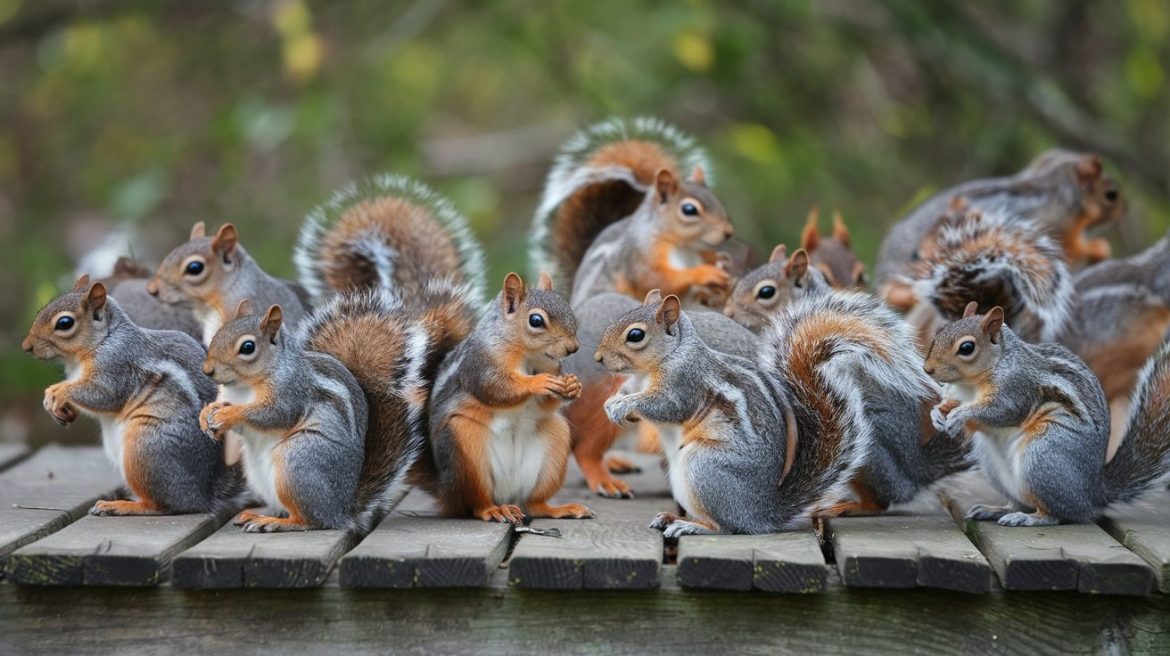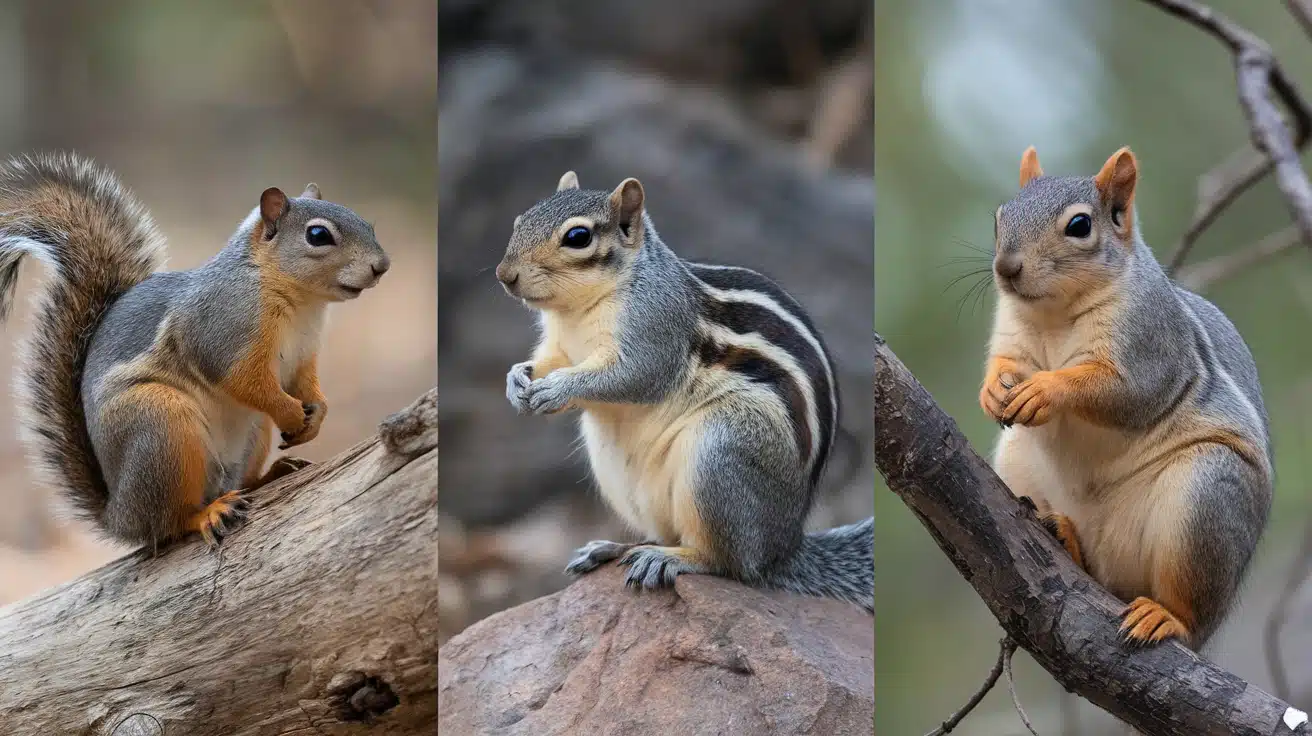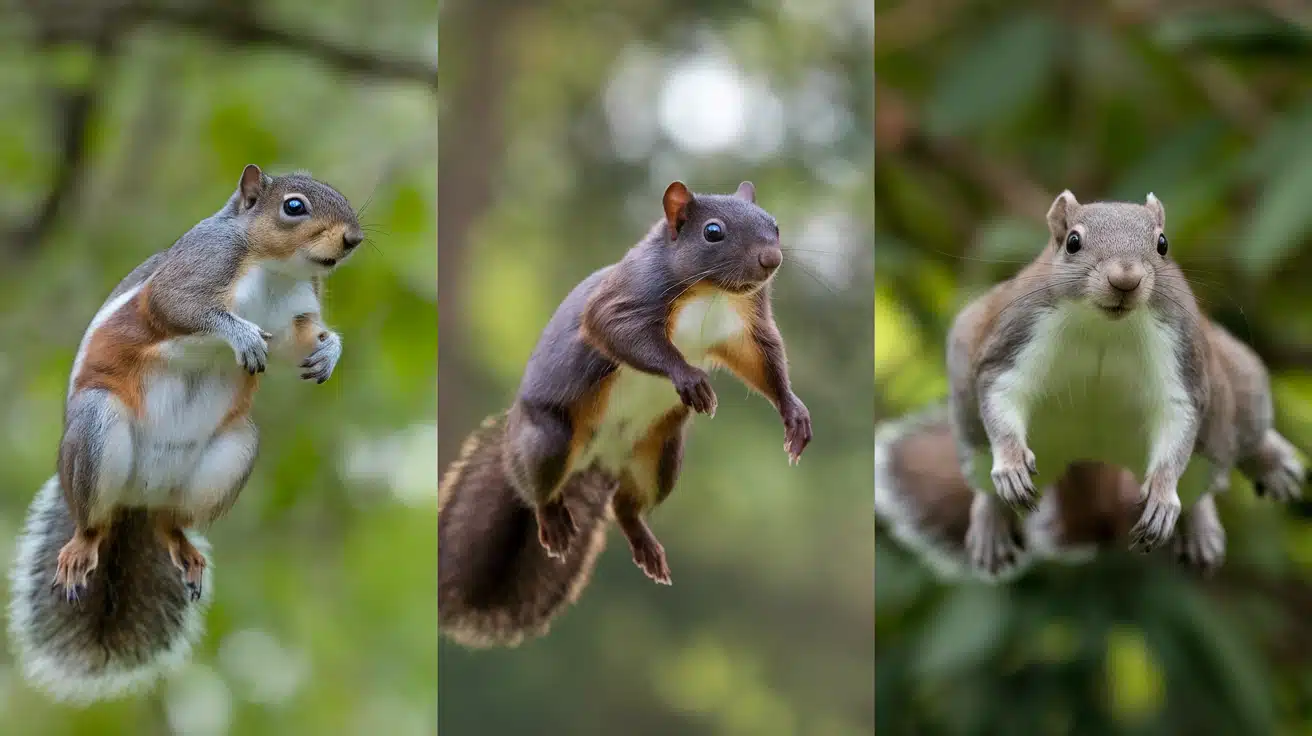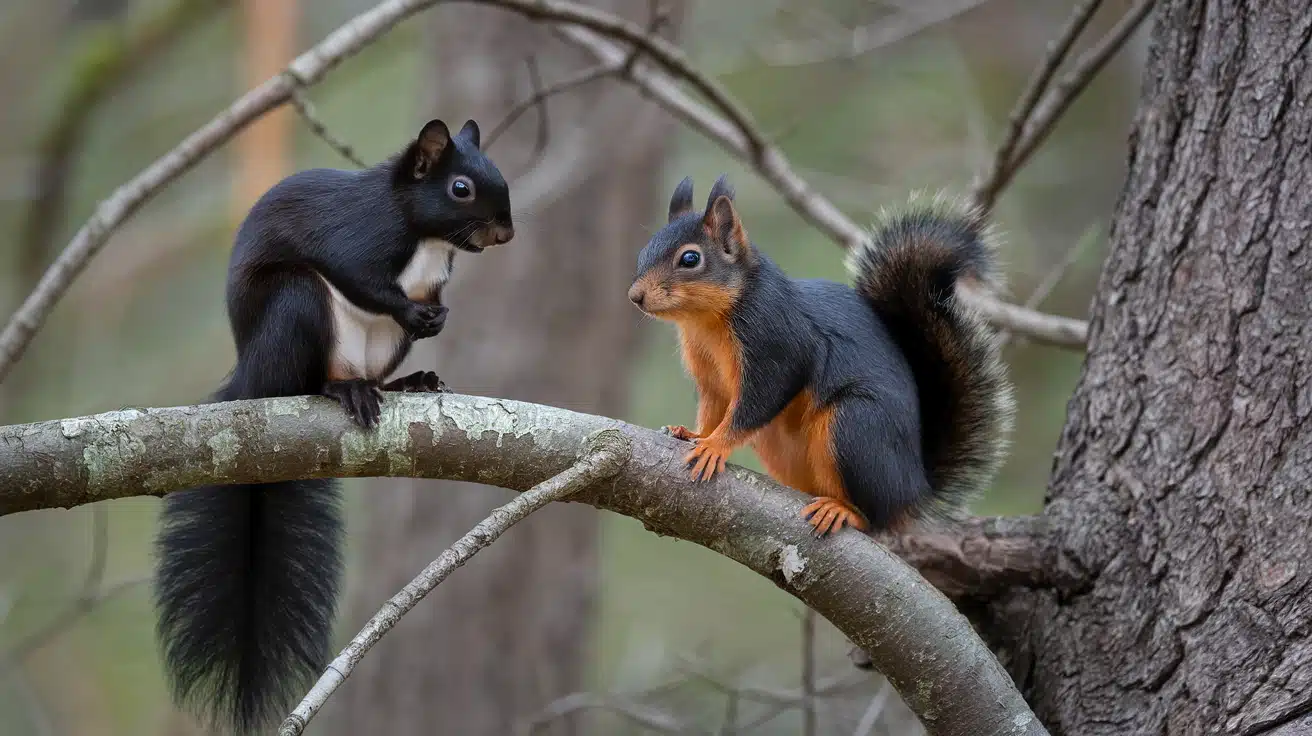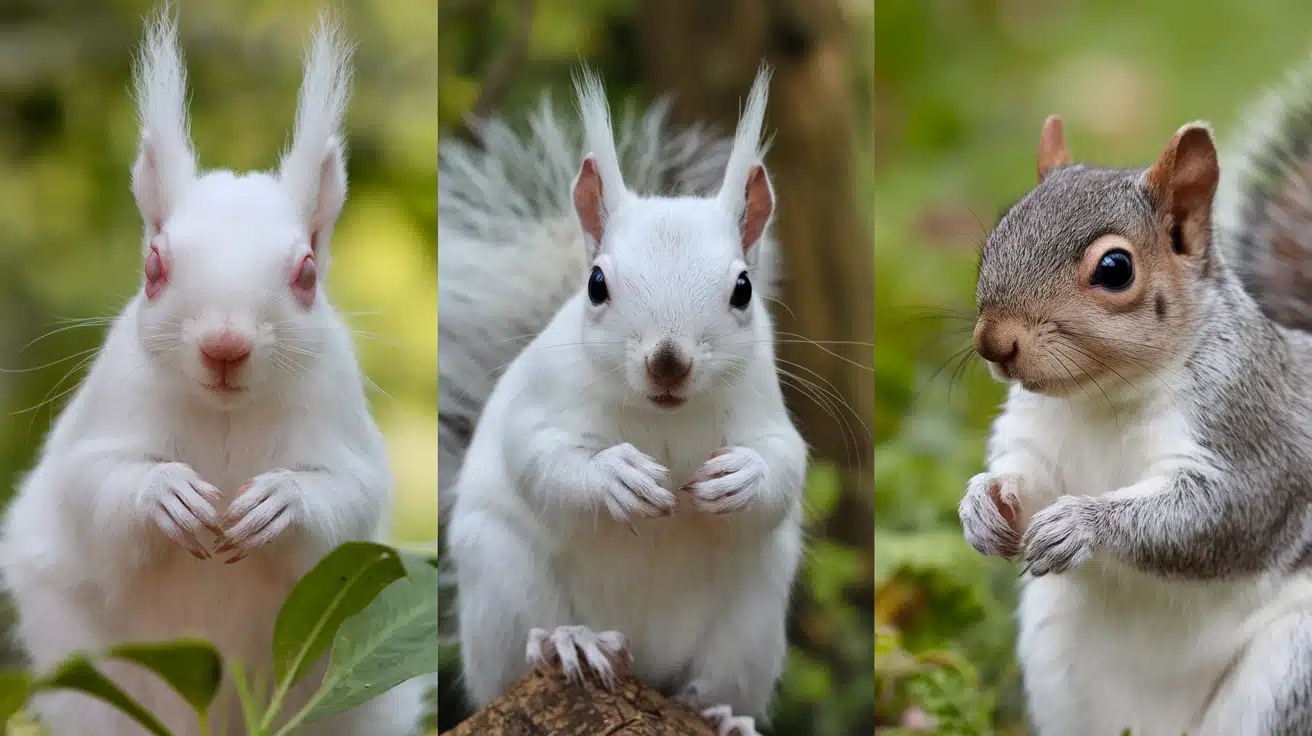Squirrels are among the most common woodland creatures you’ll spot in parks, forests, and even urban neighborhoods. These small, bushy-tailed mammals display remarkable variety across different regions and habitats.
From the common gray squirrel that visits backyard feeders to the striking red squirrel with its distinctive ear tufts, these nimble rodents have adapted to environments worldwide.
Their physical characteristics vary significantly – some have stripes, others sport unique color patterns, and their sizes range from tiny chipmunks to larger tree-dwelling varieties.
Join us as we observe these resourceful creatures that have successfully thrived alongside human development while maintaining their natural behaviors.
Understanding Different Squirrel Types
The diversity of squirrel species spans across continents, each with distinct physical traits and behaviors suited to their environments.
This section highlights key squirrel varieties, from common backyard visitors to rare forest dwellers, helping you identify these resourceful mammals in their natural habitats.
Tree Squirrels: Masters of the Forest Canopy
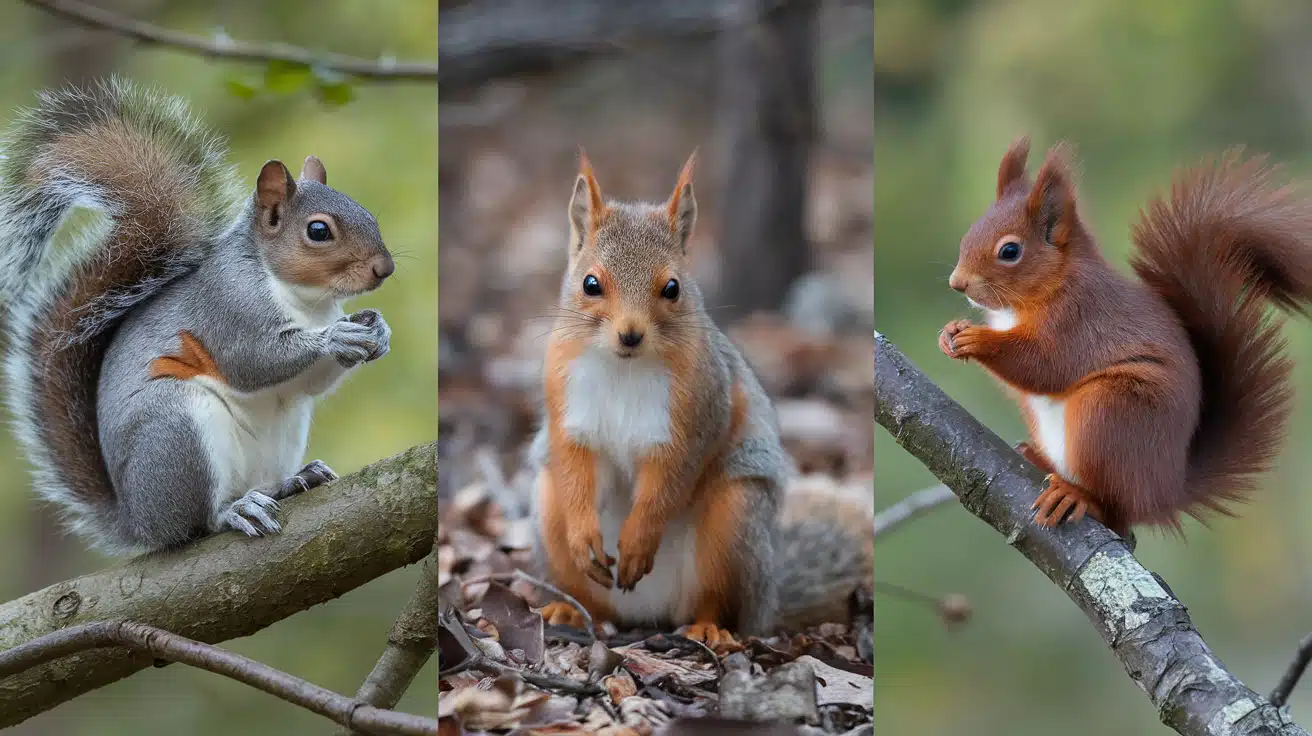
Tree squirrels are the most recognizable and widespread, thriving in woodland areas, urban parks, and backyard gardens.
These agile climbers have adapted to life among branches, using their sharp claws and bushy tails for balance and navigation.
| Species | Habitat | Size | Color | Lifespan |
|---|---|---|---|---|
| Eastern Gray Squirrel | Forests, urban areas | 8-11 inches | Gray with a white belly | 6-12 years |
| Fox Squirrel | Woodland edges, parks | 10-15 inches | Reddish-brown | 8-18 years |
| Red Squirrel | Coniferous forests | 7-9 inches | Reddish-brown | 5-10 years |
Fun Facts:
- Tail Talk: A squirrel’s tail is more than cute—it’s a multipurpose tool for balance, communication, and even a warm blanket on cold nights.
- Memory Masters: Tree squirrels can remember the locations of thousands of nut caches, showing remarkable spatial memory that helps them survive the winter months.
Ground Squirrels: Underground Architects
Ground squirrels are the excavators of the squirrel world. They create intricate underground tunnel systems as their homes, protection, and survival strategies.
These resourceful rodents thrive in open landscapes, from grasslands to desert regions. They use their impressive burrowing skills to escape predators and extreme temperatures.
| Species | Habitat | Size | Color | Lifespan |
|---|---|---|---|---|
| California Ground Squirrel | Grasslands, agricultural areas | 8-11 inches | Gray-brown | 3-6 years |
| Thirteen-lined Ground Squirrel | Prairies, farmlands | 6-8 inches | Striped brown and white | 4-5 years |
| Rock Squirrel | Rocky areas, desert regions | 10-14 inches | Grayish-brown | 5-10 years |
Fun Facts:
- Sophisticated Homes: A single ground squirrel burrow can have multiple chambers, including separate rooms for sleeping, storing food, and even nurseries for baby squirrels.
- Hibernation Heroes: Many ground squirrel species can enter a deep hibernation state, lowering their body temperature and metabolism to survive harsh winter conditions.
Flying Squirrels: Aerial Acrobats of the Forest
Flying squirrels are not true flyers, but incredible gliders with a special membrane called a patagium that stretches between their front and back legs.
These nocturnal creatures can soar up to 50 feet through the forest, moving silently from tree to tree in a remarkable display of natural engineering.
| Species | Habitat | Size | Color | Lifespan |
|---|---|---|---|---|
| Northern Flying Squirrel | Coniferous and mixed forests | 8-10 inches | Soft gray-brown | 5-10 years |
| Southern Flying Squirrel | Deciduous forests | 7-9 inches | Grayish-white belly | 4-5 years |
| Siberian Flying Squirrel | Boreal forests | 5-7 inches | Grayish-brown | 4-6 years |
Fun Facts:
- Night Vision Experts: Flying squirrels have large eyes that help them navigate dark forests and allow them to see exceptionally well in low-light conditions.
- Social Sleepers: Unlike many squirrel species, flying squirrels often huddle together in groups during cold nights, sharing body heat in tree cavities or nest boxes.
Black Squirrels: Nature’s Rare Color Variant
Black squirrels are not a separate species but a color morph of typical tree squirrel populations, primarily seen in Eastern Gray and Fox Squirrels.
These striking animals result from a genetic mutation that produces extra melanin. Their distinctive dark coloration helps them blend into shadowy forest environments.
| Species Origin | Primary Regions | Genetic Cause | Prevalence | Population Impact |
|---|---|---|---|---|
| Eastern Gray Squirrel Variant | Northeastern US, Parts of Canada | Melanism gene | 1-2% of population | Local genetic variation |
| Fox Squirrel Variant | Midwestern United States | Melanin mutation | Rare occurrences | Limited geographic clusters |
Fun Facts:
- Urban Evolution: Some cities, like Kent, Ohio, and Toronto, Canada, have higher concentrations of black squirrels due to specific local genetic patterns and urban ecosystem dynamics.
- Survival Advantage: In dense, shadowy forests, black squirrels may have a slight camouflage advantage, which could help them avoid predators more effectively than their lighter-colored relatives.
Albino and White Squirrels: Nature’s Rare Gems
Due to rare genetic mutations, albino and white squirrels have extraordinary genetic variations that stand out dramatically in their environments.
These unique creatures are not distinct species but uncommon color morphs that capture the imagination of wildlife enthusiasts and local communities.
| Type | Genetic Cause | Color Characteristics | Survival Challenges | Notable Locations |
|---|---|---|---|---|
| True Albino | Complete lack of pigment | Pure white with pink/red eyes | High predation risk | Sparse, isolated populations |
| Leucistic White | Partial pigment loss | Pure white with dark eyes | Moderate visibility | Specific regional clusters |
| Partial White | Localized gene mutation | White patches or spots | Lower survival challenges | Random occurrence |
Fun Facts:
- Protected Populations: Some towns, like Olney, Illinois, have become famous for their protected white squirrel populations. These towns treat these animals as local celebrities and implement conservation efforts.
- Genetic Rarity: The chances of a squirrel being born completely white are estimated to be around 1 in 100,000, making these animals uncommon in the wild.
Wrapping It Up!
Squirrels are way more than just cute animals running around.
They play a big role in keeping nature healthy and balanced. These small creatures work in forests, parks, and even city streets daily.
Think about it: squirrels help trees grow by planting seeds when they forget where they hid their nuts.
They feed other animals and control insect populations. Their super skills allow them to live almost anywhere, from thick woods to busy city parks.
Next time you see a squirrel, pause and watch. You’ll see a tiny animal with a huge impact on the world around us.

